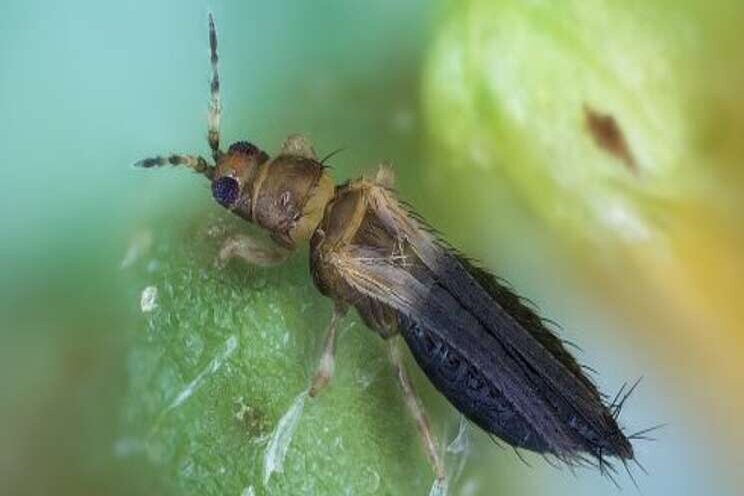New thrips identification poster available
Added on 24 March 2020

Thrips are major pests in greenhouse horticulture, both in vegetable crops and floriculture. The most widely distributed and damaging species in the western flower thrips, Frankliniella occidentalis. This exotic species entered the European greenhouses in the eighties and established since that time. Besides this species, many more exotic thrips species were imported with planting material and became common pests, like the Poinsettia thrips Echinothrips americanus and more recently, the Japanese flower thrips, Thrips setosus and the Tobacco thrips, Thrips parvispinus. For the control of thrips, it is very important to know exactly which species is present, because the efficacy of biological control agents and (bio)pesticides can be very species dependent. Also the knowledge about their behavior, developmental time and host plant acceptance is important information for setting up effective control programs.
Two levels
This new thrips identification poster can help to identify thrips to species level. The poster can be used on two levels. The first is to get a quick impression of the possible species, based on the pictures of adults, larva and damage. For the second level, microscopic slides are needed that show the different morphologically parts in more detail, which is needed for the identification to species level. For example the number of antenna segments, the hairs on the wings and pronotum or the structures on the exoskeleton. The composition of the poster was financed by the Dutch "Programmafonds Glastuinbouw" and the translation was funded by Agriculture and Horticulture Development Board in the UK.
Source and Photo Courtesy of Wageningen University & Research
Source: Wageningen University & Research
More news















